How to play Cricket
Cricket is a non-contact team sport, that belongs to the group of games that use a bat and ball. It is set on an oval-shaped field and played between two teams. Learn how to play cricket from this article!
 Parimatch
Parimatch
 Mostbet
Mostbet
 Pin up
Pin up
Cricket: general information
Cricket is a ball game where each opposing team of eleven players competes to get as many points as possible after hitting the ball as far away as possible using a bat. The sport has its origins in the UK and has spread to many other parts of the world, especially in many of the Commonwealth countries.

The game area is usually oval and has a grass surface with a particularly even, short cut and about 20 meters long middle field (pitch), where two so-called fences (wickets) stand at each end. The teams play alternately inside and out. The infield team has two players on the field at a time, one batsman at each fence. The bowling team outside has all the players on the court during the whole time, a bowler at one fence, a wicket-keeper at the other, and the remaining nine distributed over to catch the ball.
Cricket is first and foremost a match between pitcher and batsman. The thrower tries to knock out the batsman by the opposite fence in various ways, including by throwing down the fence behind him. In traditional cricket, the team’s innings end when ten of the eleven batsmen are knocked out. The thrower makes a series of six throws (sometimes spin bowling is used) before he is replaced by swapping places on the court with the new thrower, who will throw from the other fence. It is allowed to throw again later in the round, just not two series in a row. As a rule, only some of the away team’s players are in action as pitchers during a match. The batsman defends the fence and tries to hit the cricket ball far away and score a point (run) by running to the second fence while the batsman here runs to the first. A knocked-out batsman is replaced by the next on the list and does not re-enter the inning. Substitutes are only used for injured or sick players.
Game history
The first historical mention of the game is related to the southern part of England of 16th century. As a large wool manufacturer, the country is well known for its abundance of sheep pastures. The history of the industry goes back to the ancient times and Roman conquest period. No wonder that the first cricket games in England were operated on the fields with low grass, and the first cricket ball was made of sheep wool. It is considered England’s national sport.
However, the origins or cricket still remain pretty ambiguous. Some believe that it was probably developed from old Anglo-Saxon ball games and various folk games far back in the Middle Ages. Today’s fences were originally just holes in the ground, which a player defended with a stick (cricce.) By the end of the 17th century, the fences were in use, and the first known cricket match was played in Sussex in 1697. The first match between teams from English counties took place in 1709. The championship is held to this day, and cricket is played in many other countries all over the world.
Equipment
The cricket ball is solid and made of cork tied together with yarn and sewn with two pieces of leather. It has the circumference of 22.4–22.9 centimeters, and its weight is 156–163 grams. The color is traditionally red, but white balls are also used. It is just a little bigger than tennis ball. The cricket bat has the size of a maximum 96.5 centimeters with a flat 10.8 centimeters wide striking surface on one side, rounded on the other side. It is made of wood with a rubber coated handle.
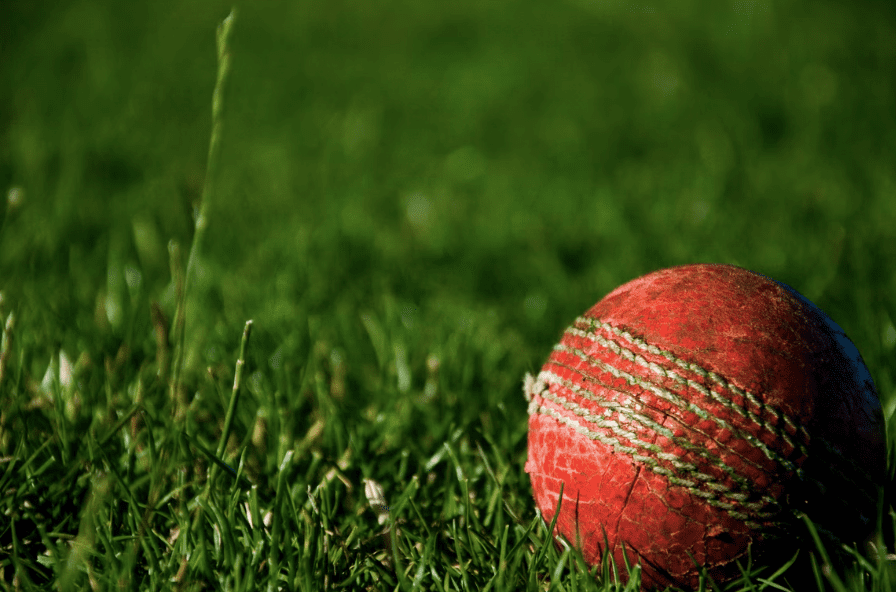
The players wear shoes with knobs and are originally always dressed in traditional white clothes: long trousers, short or long-sleeved shirt, wool sweater in cool weather and possibly a hat / shade hat. Now it is allowed to have colors on the suits, but in test cricket matches it is still mandatory to wear only white clothes. The batters and the wicket-keepers have gloves and leg / knee protection, some outdoor players occasionally a helmet.
Playing area
The cricket field does not have standardized dimensions, but it is usually 50-70 meters from the midfield (cricket pitch) to the course’s outer boundary, which is marked with a white line, rope or a fence. The fences in the pitch are 20.12 meters apart as is marked by the two throw lines (called bowling crease/batting crease). Each bowling crease is bounded by side lines, which are connected by a running line in front of the throw line. The pitch may also have a different surface than grass, for example a solid soil. There is also an option to make a pitch out of artificial turf.
The wickets are 22.8 centimeters wide and consist of three round fence posts (stumps) folded into the ground at intervals of about six centimeters, so that the ball can not pass between them. At the top, they connected by two loose, cylindrical and about eleven centimeters long bails. The total height of the wicket is around 72.4 centimeters.
Game terms
Batsman
Batsman is the term used to describe the people with bats. Two of them are on the field at a time, positioned in front of the wickets. To score the points, they have to hit the ball. If a batsman leaves the game, the next one of the batting team will take the position. Each player must act as batsman once.
Bowler
The bowler is the person who acts as the fielding team’s pitcher. During an innings, several bowlers are used, usually between four and seven.
Run
A run is the term used to describe a run or a score. When the batsman hits the ball of the bowler with his cricket bat, he runs to the opposite side of the field (pitch) and switches places with the second batsman. The successful change of sides secures the fielding team a point, i.e. a run.
Innings
An innings, i.e. a section of a game, is divided into further subsections, so-called over. An over consists of six regular throws by the bowler. Once he has completed these, the over of the next bowler on the other side of the pitch begins. An innings is over when 10 of the 11 batsmen have been bowled out.
Wicket and wicket-keeper
The wickets consist of three wooden sticks, the stumps, on which the bails are placed. The batsmen are positioned in front of the wickets and defend them. The fielders try to hit wicket and thus destroy them.
The team of fielders also includes the wicket-keeper. The wicket-keeper is positioned behind the wicket and has the task of picking up balls that the batsman has not hit and preventing runs.
The game
Game modes
Before learning how to actually play cricket, let’s see what kinds of game there are. Cricket is played in different formats. In traditional cricket game, the matches are limited in time and can last from one afternoon to several days. In its turn, the so-called first class cricket matches with professional fielding team and batting team members last for at least three days with many hours of playing time each day. At this time, each opposing team should have two innings. International matches, so-called Test Cricket Matches, run over five days with six hours of play per day plus breaks.
Another and newer form of playing cricket is one-day match, where the teams play one innings each during a day. Here, the number of throwing series per inning is limited, and the maximum amount is usually around 50. Therefore, and rounds often end before ten batsmen of the batting team are knocked out.
The very latest form of cricket is the short version called Twenty20 (T20.) Here, the throwing series are limited to 20 overs per fielding team, and the matches are completed in around three hours.
Scoring
Only the infield (batting) team can score points, one point for each run the batsmen make when the bowled ball is knocked away. You can do several races per stroke. The striker scores points without running if he knocks the ball off the field, six points if it lands outside, four points if it lands inside and rolls out.
The batting team is also awarded extra points (extras) without having to hit the ball: if the thrower makes a mistake and breaks the rules (no ball), or throws from the bowling crease out of the striker’s range (wide), or is awarded for successful runs when the ball passes both striker, fence, and fence guard (bye), or the ball changes direction after hitting the batsman involuntarily and not heading towards the fence (leg-bye). The extra points are not credited to any particular batsman.
Game process
Two umpires, one at each of the two wickets, oversee the game. A round opens by the batting team placing their first two batsmen at the fences and the fielding team deploying the fence guard and sending forward their first throw. The other nine outfielders place themselves on the field according to tactical dispositions with regard to which thrower and batsman is in action. This is an important part of the game and is decided by the team captain, who acts as team leader. There are fixed names for the eleven players’ court positions.
The fast bowler throws the cricket ball from one side of the fence within the sidelines. He must not step completely over the bowling crease with his foot, and the throw must be made with a straight arm over one shoulder. The ball can move really fast (up to 140 kilometers per hour) or loosely and with or without a screw. The ball usually bounces on the ground before the hitter, who often stands with one foot on each side of the bowling crease.
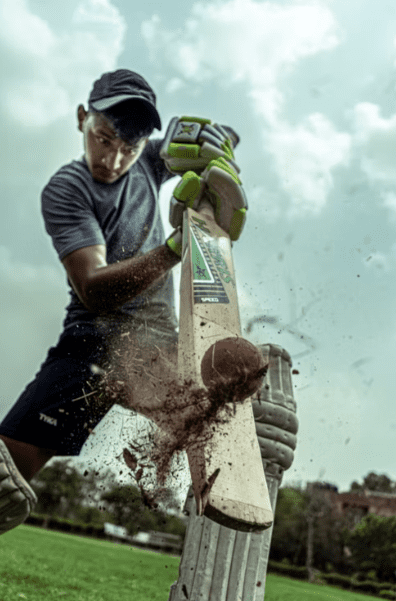
The batsman does not have to hit cricket ball. If the batsman hits, the ball can go in any direction, even backwards. But – unlike in baseball – he must not run if he hit the ball. The score runs are done between the popping creases (about 17.7 meters) and with the cricket bat in ones hands. In different numbers of races, the batsman ends up at the opposing team’ wicket, and the other batsman must strike in the next throw. The running is therefore also tactically planned to always get the best batsman against the bowling team pitcher.
The batsman of the batting team can be knocked out in different ways:
- When the fielding team hits the fence so that at least one of the crossbars falls down (bowled out);
- When a hit ball is caught in the air by an opponent (caught out);
- When the fence guard catches the cricket ball and knocks down the fence while the batsman stands for a moment in front of the running line with both legs (stumped out);
- When the batsman touches and stops a ball with the body, which otherwise would have hit wicket (leg before wicket or lbw);
- When the fence is thrown down by the fielding team while the batsmen are running between the running lines (run out). In the latter case, it is the batsman closest to the hit wicket who is knocked out, you can never knock out two batsmen at the same time.
Match results
The team with the most team’s total points in total wins the match, the victory is stated as the predominance in the number of runs. In other words, the team with the most runs wins, and it’s a final decision. In the event of a tie, the match ends in a tie. In the last round, the match begins and is stopped if the bowling team passes the score to the away team, which has finished playing and can not score more points. In matches with two innings per one team, the last inning is omitted if the bowling team already has more points on one inning than the opposing team on both.
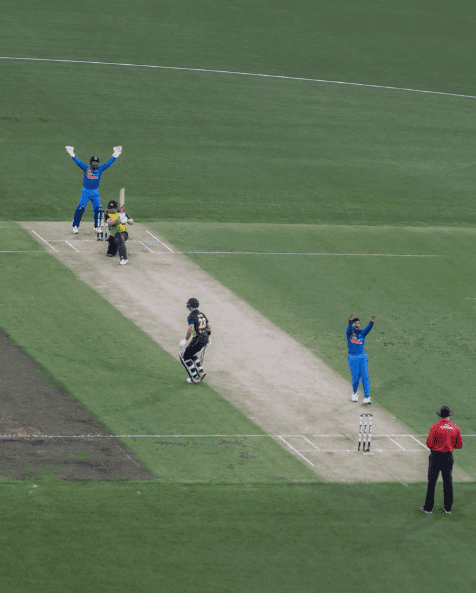
In traditional cricket, the matches are sometimes not finished before the playing cricket time is out on the last day. So even if a team leads big, no winner is selected. This is called a draw and occurs, among other things, in bad playing weather, something for which no time is added. To avoid a draw, the team captain often declares an innings for the finish before ten batsmen are done, if he thinks the team already has enough points to win the match or has gained the highest number. In this way, the team avoids that the opponent’s last inning does not have time to be completed. In one-day cricket or Twenty20, the matches never end in a draw.
Organizations and competitions
Marylebone Cricket Club was founded in 1787, and is still the supreme authority over the basic rules that regulate how to play the real cricket. It is located at Lord’s Cricket Ground in London, the world’s most famous cricket ground.
The International Cricket Council (ICC), founded in 1909, can organize a test match between England, Australia, South Africa, New Zealand, India, Pakistan, Sri Lanka, the British West Indies (players from certain countries in the Caribbean), Zimbabwe and Bangladesh. The first test match was played in 1877 between England and Australia. From 1975, the World Cup in one-day cricket has also been held, where several countries got the chance to participate. The World Cup in Twenty20 was first held in 2007, and is held every other year. Cricket was an Olympic demonstration sport in Paris in 1900.
From the 1880s, cricket has also been played by women with a slightly lighter cricket ball. A separate women’s association was founded in 1926, which organizes test matches, as well as the World Cup from 1973.
Cricket in India
Almost every country is associated with a certain sport, Germany certainly with soccer, some Asian countries with martial arts, Switzerland with winter sports, the USA with soccer and so on.
But what about India? Indias favourite sport is without a doubt cricket! Most people here know how to play the cricket game.
The pride of the country: The Indian National Cricket Team
Very many Indians are cricket fans. The participation in the big international competitions awakens in many Indians the desire to represent their country in sports one day. The people that play cricket are idols who are naturally cheered and enjoy great attention in the Indian media. Everyone knows the names Sachin Tendulkar, Rahul Dravid, Anil Kumble or Sunil Gavaskar, some of whom are revered almost like gods. It is quite clear that many young Indians would also like to see themselves in the role of the famous batsmen and start practicing cricket.
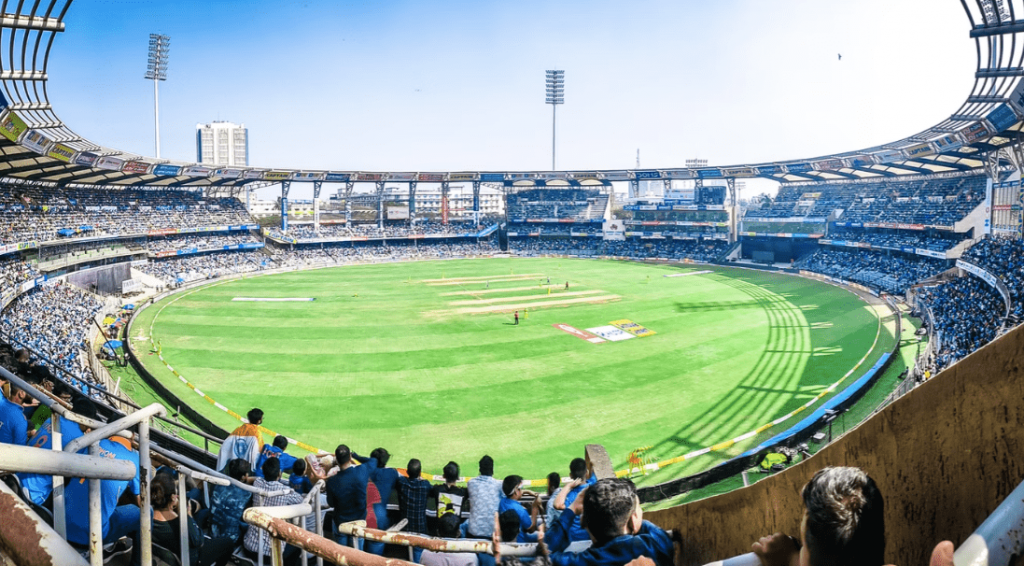
The rules of cricket are somewhat reminiscent of American football, but cricket is less “brutal”. The sport is very easy to learn and many Indian children start their cricket career by simply organizing a small ball and using sticks as wickets. Instead of a cricket ball, they simply use a tennis ball or some other wrapped ball. Cricket trains dexterity and can be downright addictive. In addition to the existing competitions, new ones are being developed all the time, including the IPL, which means Indian Premier League.
How to play cricket online – Sports betting on cricket
In India, betting on cricket competitions is certainly done privately, because betting is in the nature of man. In Europe people can bet on cricket quite officially and with very good conditions offered by many online bookmakers. The top betting providers like Parimatch, Mostbet, Pin Up, and many others provide cricket betting with high odds, often with a live stream and the security of a sports betting license.

Cricket is the national sport in India, and the whole country cheers on at the world championships. While the men’s team is quite elite, the women’s national team also includes players from lower castes.
In modern culture
The cinema hit of 2001 in India was the film “Lagaan – Once Upon a Time in India.” It tells the story of a poor village suffering under the heel of British colonial rule. After a particularly meager harvest, the villagers ask the British to give them a break on their oppressive taxes. The colonials agree – on the condition that the Indians beat them in a game the latter have never heard of, let alone mastered: Cricket. After countless entanglements and snappy Bollywood songs, the villagers actually beat the British at the film’s dramatic climax.
“Lagaan” is a masterful staging of Indian national pride and anger at the former colonial power. At the same time, the film puts into perspective how the sport came to the country. For even if the Indian cricket captain Virat Kohli says today, “It’s not a sport, it’s a religion!”-cricket did not originate in India. Nevertheless, it has become the number one national sport on the subcontinent. And it forms a microcosm of all the difficulties and solutions to issues around ethnicity, gender, caste and class in India today.
Matches history
The first cricket match in India was played between British sailors in 1721. Gradually, the sport spread among Indians, starting with the Parsis, who originally came from Persia and came into contact with many different people as traditional traders. According to Lars Dzikus, a sports scientist at the University of Tennessee, the British did not actively try to popularize cricket in India. However, they did share their traditions with the Indians to demonstrate their supposed cultural superiority and justify their rule.
More than 250 years later, India, now independent, played England at Lord’s Cricket Ground in London, the sport’s most traditional stadium, also known as the “Cathedral of Cricket.” That was in 1983, and India defeated England to take home the World Cup. This was a moment of great “symbolism and significance,” says Dzikus, after all, the colonists had been beaten in their own game, on their own soil.
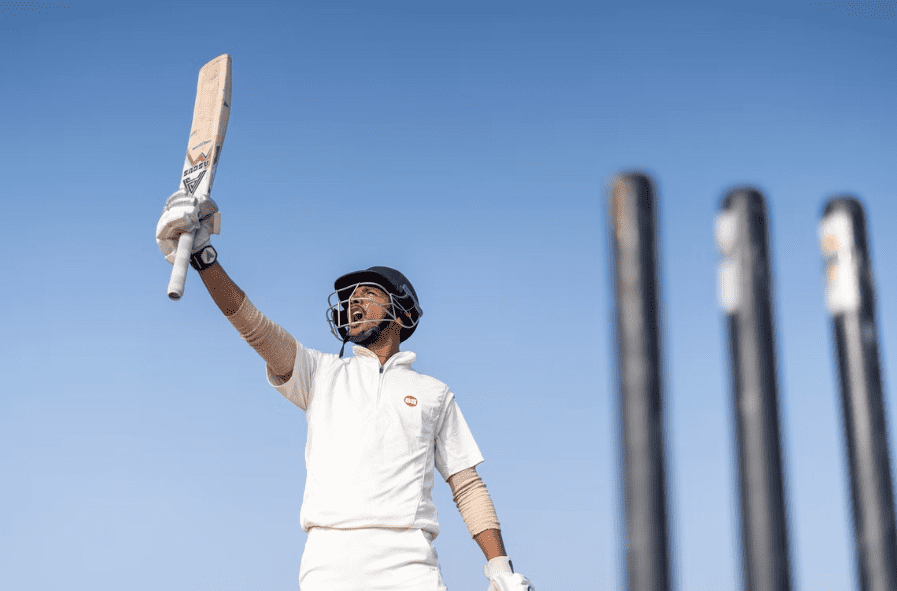
The match marked a turning point in the history of Indian cricket, suddenly giving the sport immense popularity and paving India’s way to becoming a leading cricketing nation. “It’s quite impressive how Indians have embraced the sport and put their stamp on it,” says Dzikus. India’s sporting successes and the Indian Premier League, the largest professional cricket league in the world, have meant that the business of the game is now largely based in India. So much have Indians made the sport of their former colonial masters their own that Dzikus says the question for the British is, “Is it really still our game?”
India, in addition to its well-known national men’s team, often called the “Men in Blue” because of their blue jerseys, has a women’s team that is also growing in popularity. Both participate in international competitions. In the Indian Premier League, which features talent from around the world, eight teams, such as Sunrises Hyderabad, compete in T20 tournaments, with games relatively short at around three hours. In Test cricket, the highest form of the game, matches last five days. International matches are of great political importance: cricket not only strengthens national consciousness, but is also intended to promote cohesion among India’s various factions. India’s matches against Pakistan, its main geopolitical rival, are always a highlight. On such days, spectators in all public places and homes are glued to their screens. Sports expert Roy Kulkarni describes it as a great “union in hatred of the opponent.” Emotions run high, and a triumphant reception beckons the winning team at home.
Indian Premier League
The Indian Premier Cricket League (IPL) can be called a modern sports phenomenon. Some still do not understand how, in a country that is not so rich by the world standards, there can be a sports organization whose match broadcasting rights cost more than those of the NHL. The Premier League also ranks among the top 10 sports leagues in the world in terms of popularity, and the brand value of the Indian Premier League in 2017 was $5.3 billion. Such a successful cricket league would not be possible without the stars of the sport.
So, who can be considered the most successful IPL captain?
Without a doubt, the true legend of Indian cricket and the best captain in IPL can be called Virat Kohli. The 32-year-old is considered one of the best batsmen in the world. He is the leader not only of his club Royal Challengers Bangalore but also the Indian national team.
Virat is awarded India’s highest sporting honor, the Rajiv Gandhi Khel Ratna, and the country’s 4th highest civilian order, the Padma Shri. He is also the recipient of numerous other awards, most notably the Sir Garfield Sobers Trophy (Player of the Year) in 2017 and 2018.
In 2018, Time magazine named Kohli one of the 100 most influential people in the world. In 2020, he was ranked 66th on Forbes’ list of the world’s top 100 highest-paid athletes. Kohli’s estimated income (including club contract and advertising agreements) is over $26 million. Without a doubt, Virat Kohli has earned the title of “the most successful player with the bat in the IPL.”
IPL winners and captains
However, Kohli is not the only one glorifying and promoting Indian cricket around the world. Let’s take a brief look at the leaders whose teams have won the Indian Premier Cricket League in recent times.
For the last 5 years, the Indian Premier League title has consistently gone to one of the teams, Mumbai Indians and also Chennai Super Kings. The teams also occupy the top two places in the list of the most titled clubs in the country. Mumbai Indians have the majority of IPL titles (5), while Chennai Super Kings have been the best in the country 4 times. A lot of credit for the latter titles goes to team captains Rohit Sharma and Mahendra Singh Dhoni respectively.
Sharma holds the world record for the greatest individual score by a player with a cricket bat played in a one-day international match with 264 points in 2014. In January 2020, the International Cricket Council (ICC) named Sharma cricketer of the year, the same year he was awarded India’s highest sports award, the Rajiv Gandhi Khel Ratna.
Dhoni is not only an athlete but also a military man – he is an honorary lieutenant colonel of the Indian Territorial Army. It was with Dhoni that Team India won the first Twenty20 World Championship in 2007, as well as the 2011 World Cup, 2013 ICC Champions Trophy and two Asian Cups. He has won numerous awards, twice being named ICC Cricketer of the Year (2008, 2009) and won India’s highest sports award, the Rajiv Gandhi Khel Ratna (2007). He is considered one of the greatest batters in the history of the sport.
Cricket and Baseball: What is the difference
| Cricket | Baseball | |
| Definition | Cricket is a game that belongs to the bat family and is played by two teams of 11 players each. | Baseball is a competition between teams playing with 9 members each. |
| Bat | The cricket bat is flat on its hitting side and has a ridge on its back. It is made of willow wood and is connected to a long cylindrical cane handle. The handle is usually covered with a rubber grip. Bats vary in length, but may be no more than 38 inches high and 4, 25 inches wide. Although there is no standard, bats usually weigh from 2 pounds 7 ounces to 3 pounds. | A smooth metal or wooden round bat that is used to hit the ball. This has a round top and a flat handle at the base of the bat. At its thickest, the bat can be no more than 2, 75 inches in diameter and no more than 42 inches long. The bat weighs no more than 33 ounces; however, the weight may vary depending on the player. |
| Ball | A cricket ball is made of cork and is covered with leather. The ball is round and weighs from 5, 5 to 5, 75 ounces and is 8 13/16 to 9 inches in circumference. | The ball consists of a mixture of cork and rubber that is wrapped in yarn and then covered with leather. The ball is round and is 9 to 91 to4 inches in circumference 27⁄8 to 3 inches in diameter. The ball should not weigh less than 5 ounces or more than 5 and 1/4 ounces. |
| Ball Color | White (for one-day teams) and Red (for test matches and first-class cricket). | The ball is white with red stitching on it. |
| Field | Cricket field is 66 feet or 20, 1 m (approximately 58 feet or 17, 7 m between bowler and player with bat on delivery) | 60 feet, 6 inches or 18, 4 meters (about 52 feet or 15, 8 meters between the starting point of the pitcher and the batter’s box) |
| Protective gear | Pads, helmet and other body part pads (for the players with the bat only). No protective equipment is allowed for outfielders other than those standing very close to the player with the bat. | Gloves in the non-throwing hand may use hard plastic headgear and padding. Catchers require plastic shields, soft protective cups, and helmets. Batters must use a hard plastic helmet and protective gloves. |
| Number of umpires/judges | Two umpires on-field, 3 off-field umpires, 1 match umpire | Six umpires are used for major league games; however, they may vary from 1 to 6 depending on the game. |
| Number of players | Each team has 11 players | 9 or 10 depending on league rules and other team decisions. |
| Governing body | International Cricket Council (ICC) | International Baseball Federation |
| Balls allowed per player with bat | Limited only to the number of balls in a match, depending on overs. | The number of balls is not limited. |
| Maximum runs scored by ball/pitch | Six score runs is the maximum that can be scored on a hit. | Four bases. |
| Order of batting | Flexible, no set order for players with bat, but each person can only bat once. | Set before the game. The order of players with the bat is determined before the game begins. |
| Pitching | Two opportunities per game, but may vary from game to game. | Nine pitches per game. |
| Edge of the pitch | Boundary (or boundary string). | A fence or wall outside a foul area. |
| Participating countries | England, Australia, India, Pakistan, Sri Lanka, South Africa, New Zealand, West Indies, Bangladesh, Zimbabwe, Kenya, Netherlands, Canada, Ireland, Scotland, Afghanistan, etc. | USA, Canada, Cuba, DR, Venezuela, Colombia, Antilles, Co. Korea, China, Taipei, Japan, Australia, New Zealand, Guam, Mexico, Taiwan, Nicaragua, Philippines, France, etc. |